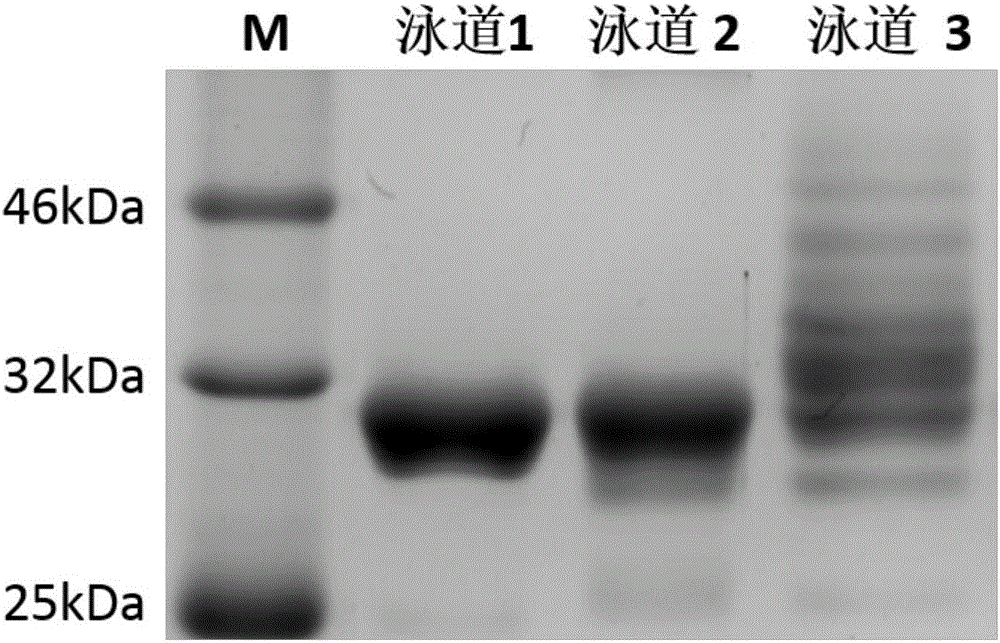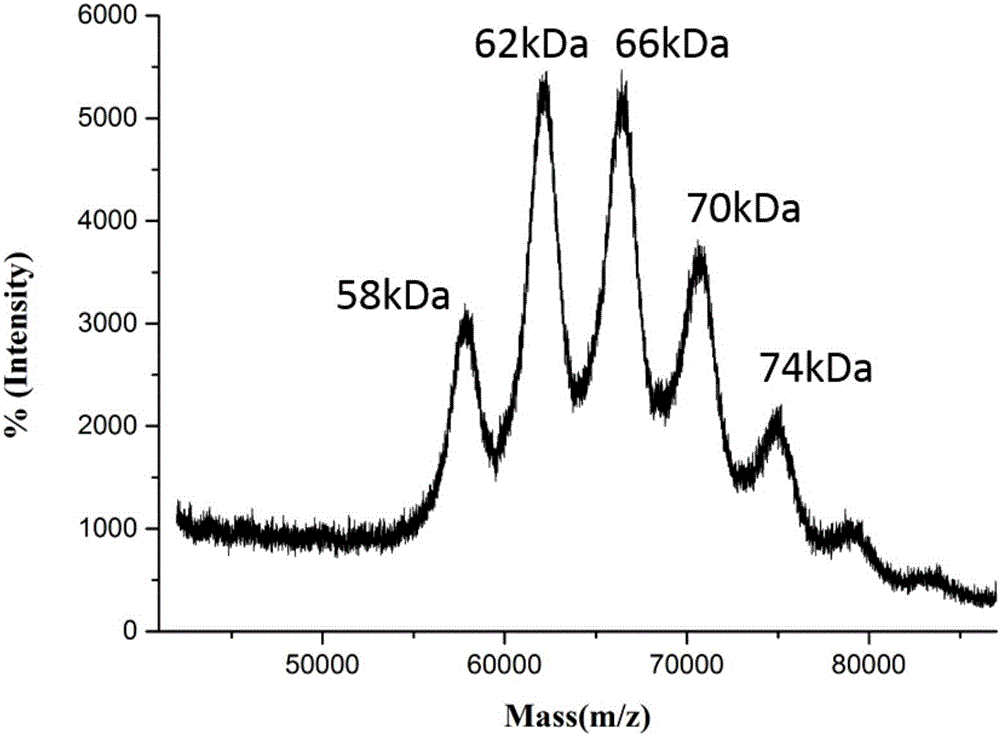Polypeptide-antibody immune conjugate and preparation method thereof
A technology of immunoconjugates and antibodies, which is applied in the direction of antineoplastic drugs, drug combinations, pharmaceutical formulations, etc., to achieve the effect of simple synthesis methods
- Summary
- Abstract
- Description
- Claims
- Application Information
AI Technical Summary
Problems solved by technology
Method used
Image
Examples
Embodiment 1
[0035] Example 1 Preparation of membrane-penetrating peptide-antibody Fc fragment conjugate (pHLIP-Fc)
[0036]1. Covalent cross-linking of mouse IgG2a Fc protein with sulfo-SMCC
[0037] 200 μg of mouse IgG2a Fc protein and 55.2 μg of sulfo-SMCC were dissolved in 0.5 mL of 10 mM phosphate buffer solution with pH=7.4 and stirred at room temperature for 1 h. Equilibrate the NAP-5 SephadexG25 column with 10mL of 10mM phosphate buffer (pH=7.4), add 0.5mL of the reaction product to the column, remove unreacted SMCC, and concentrate and centrifuge the product to 200 μL through an Amiconultra ultrafiltration tube with a molecular weight cut-off of 3KDa. A maleimide-modified Fc protein was obtained.
[0038] 2. The product obtained in step 1 and 0.2 mg pHLIP were dissolved in 0.3 mL of 10 mM phosphate buffer solution with pH = 7.4 and stirred at room temperature for 4 hours to generate pHLIP-Fc. The unreacted pHLIP was removed by centrifugation with an Amicon ultrafiltration tube w...
Embodiment 2
[0039] Example 2 Cell Membrane Anchoring of pHLIP-Fc Immunoconjugates under Acidic pH and Physiological pH Conditions
[0040] Seed B16 cells in confocal dishes at 37 °C 5% CO 2 Cultivate for a while. The DMEM medium (containing 10% fetal bovine serum) was adjusted with a pH meter to obtain complete medium with pH 6.8 and pH 7.4. The pH of the phosphate buffer was adjusted with a pH meter to obtain phosphate buffers of pH 6.8 and pH 7.4.
[0041] (1) Observation of the cell membrane anchoring effect of pHLIP-Fc under slightly acidic conditions (pH=6.8). When the cells were confluent to 60%, they were washed three times with pH=6.8 phosphate buffer, and pHLIP-Fc / a and pHLIP-Fc / b were diluted in complete medium with pH=6.8, and added to the confocal dish. 37°C 5% CO 2 After culturing the cells for 2 hours, discard the medium, wash three times with pH=6.8 phosphate buffer, and fix with 4% paraformaldehyde for 15 minutes. After blocking with blocking solution for 60 min at ro...
Embodiment 3
[0044] Example 3 pHLIP-Fc conjugates cause antibody-dependent cell-mediated cytotoxicity ADCC ability identification
[0045] The whole splenocytes of C57 / BL-6 mice were extracted as ADCC effector cells, and the splenocytes were counted. The target cells were mouse B16 melanoma cells and breast cancer 4T1 cells.
[0046] (1) ADCC capability identification under slightly acidic conditions (pH 6.8)
[0047] The target cells were treated with different drug groups, each drug was incubated in the medium with pH 6.8 for 1 h, and the pH value of the buffer used in the subsequent experiments was adjusted to 6.8. Target cells were trypsinized and counted. The effector cells and target cells were mixed into a 96-well plate at a ratio of 25:1, and the number of target cells was 20,000 per well. The effector cells and target cells interacted for 4 hours in a medium with pH 6.8.
[0048] (2) Identification of ADCC ability under physiological conditions (pH 7.4)
[0049] The target cel...
PUM
 Login to View More
Login to View More Abstract
Description
Claims
Application Information
 Login to View More
Login to View More - R&D
- Intellectual Property
- Life Sciences
- Materials
- Tech Scout
- Unparalleled Data Quality
- Higher Quality Content
- 60% Fewer Hallucinations
Browse by: Latest US Patents, China's latest patents, Technical Efficacy Thesaurus, Application Domain, Technology Topic, Popular Technical Reports.
© 2025 PatSnap. All rights reserved.Legal|Privacy policy|Modern Slavery Act Transparency Statement|Sitemap|About US| Contact US: help@patsnap.com



